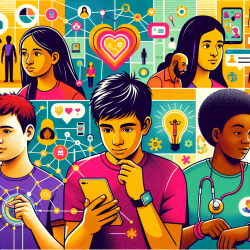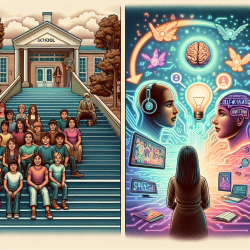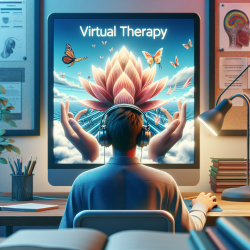Introduction
In an era where smartphones are ubiquitous, the potential for mobile health (mHealth) to bridge gaps in healthcare access is immense. However, despite widespread access to smartphones, teens from communities facing significant behavioral health disparities often exhibit low engagement with mHealth solutions. A recent study titled "mHealth Uses and Opportunities for Teens from Communities with High Health Disparities: A Mixed-Methods Study" provides valuable insights into the barriers and opportunities for mHealth adoption among these teens.
Understanding the Challenges
The study highlights several challenges that teens and caregivers face in adopting mHealth solutions. Key themes include health and wellness concerns, barriers to care, and the impacts of smartphone use. Notably, the study emphasizes the importance of addressing these barriers to enhance the real-world engagement of mHealth tools.
Key Findings and Implications
- Health and Wellness Concerns: Teens and caregivers expressed significant concerns about mental health issues such as depression, anxiety, and stress. These concerns are exacerbated by community factors like violence and lack of access to healthy food options.
- Barriers to Care: Stigma and discomfort in discussing mental health are prevalent barriers to seeking in-person care. Additionally, inconsistent smartphone access and hesitancy to use health apps due to privacy concerns further hinder mHealth adoption.
- Smartphone Usage: While smartphones are frequently used for communication and entertainment, their potential for health and wellness applications remains underutilized. Teens reported using smartphones for exercise tracking and meditation but expressed concerns about the distraction and misinformation they can also provide.
Opportunities for Practitioners
Practitioners can leverage these insights to improve their engagement with teens in underserved communities. By understanding the specific needs and barriers faced by these teens, practitioners can tailor mHealth solutions to be more accessible and effective. Here are some actionable steps:
- Collaborate with Teens and Caregivers: Engage teens and their caregivers in the design and implementation of mHealth tools to ensure they meet the unique needs of this population.
- Address Privacy Concerns: Clearly communicate data privacy policies and ensure that mHealth tools offer secure and confidential services.
- Promote Digital Literacy: Educate teens and caregivers about credible and evidence-based mHealth apps to enhance their digital literacy and confidence in using these tools.
Conclusion
mHealth presents a promising avenue for improving healthcare access and outcomes for teens in underserved communities. By addressing the barriers identified in this study and leveraging the opportunities for collaboration and education, practitioners can play a pivotal role in enhancing the adoption and effectiveness of mHealth solutions.
To read the original research paper, please follow this link: mHealth Uses and Opportunities for Teens from Communities with High Health Disparities: A Mixed-Methods Study.










